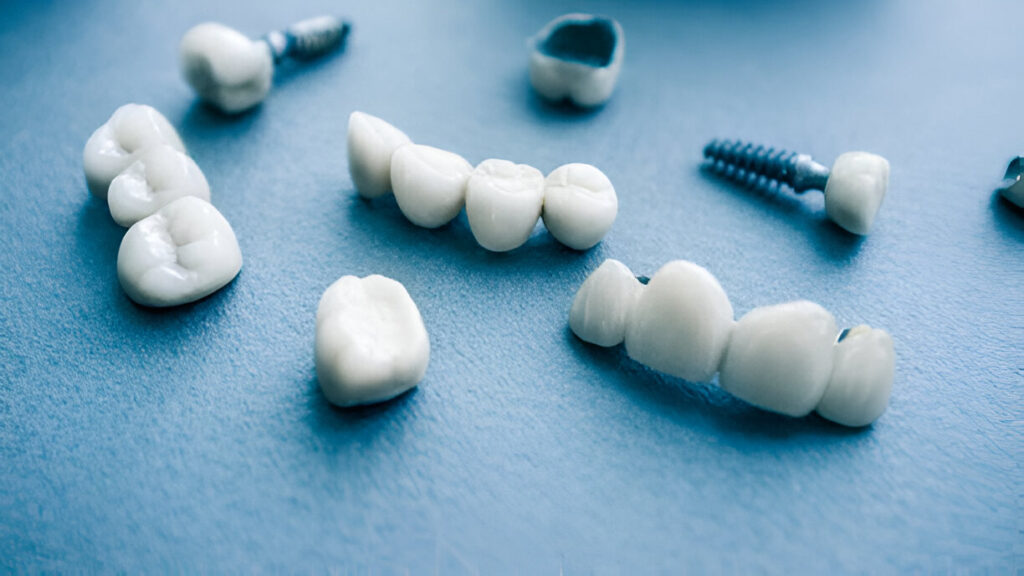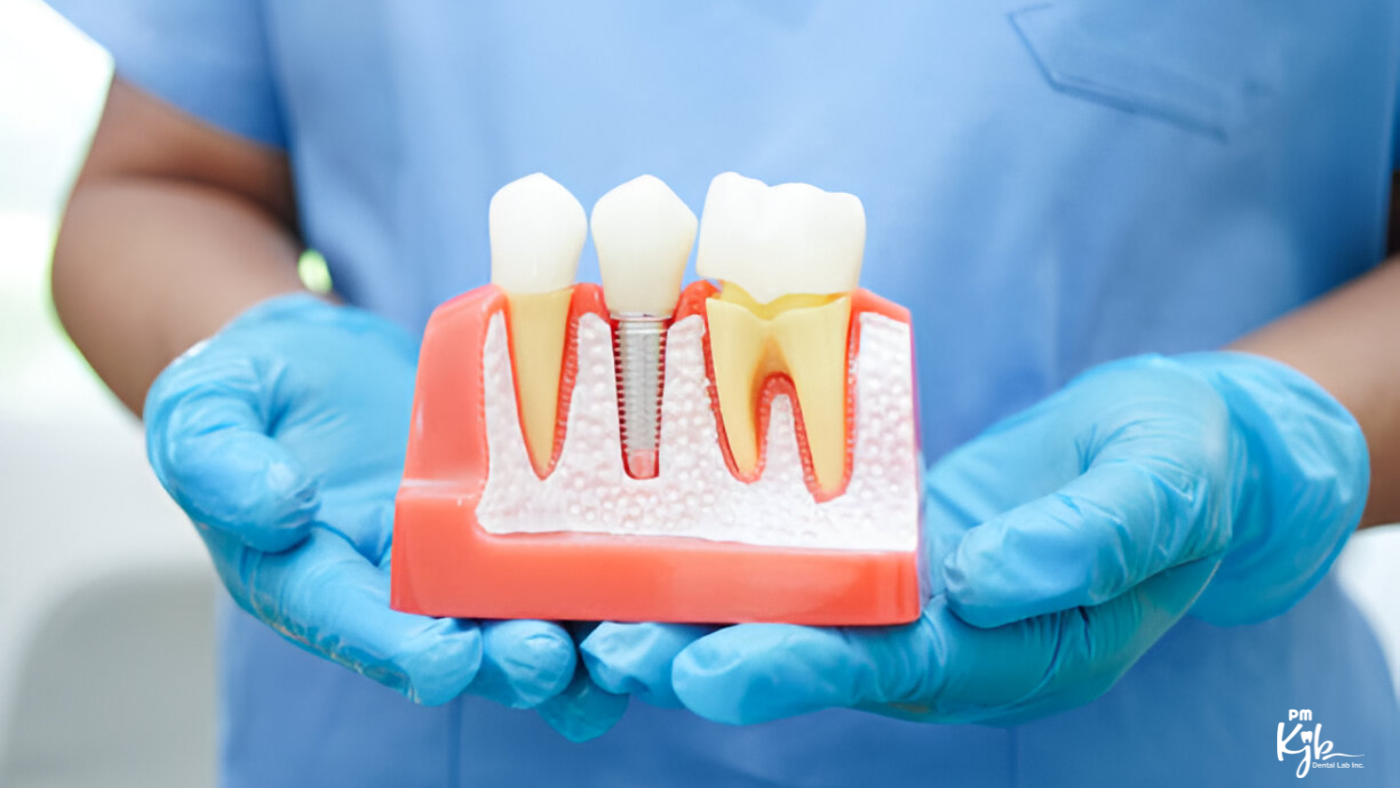Dental implants have become a reliable option for replacing missing teeth. They offer strength, function, and a natural look. But to make implants work well, dentists must understand biomechanics, how forces act on implants and bone. Let’s dive into this critical topic clearly and straightforwardly.
What Is Biomechanics in Dental Implants?
Biomechanics studies how forces affect living things. In dental implants, it means looking at how chewing, biting, and jaw movements impact the implant and bone.
When we bite, our teeth and jaws feel the force. Natural teeth handle this with a ligament buffer. Implants, however, sit directly in the bone. That means all force goes straight to the bone. Without good biomechanical planning, implants may fail.
Why Biomechanics Matter for Implants
Without understanding the forces at work, implants can face issues:
- Bone can weaken or shrink.
- Implant parts or crowns can break.
- Screws might loosen or fracture.
Dentists need to plan implant position, size, number, and angle to balance forces that’s biomechanics.
The Parts of a Dental Implant
A typical implant setup consists of three key components:
- Implant Fixture – the screw inserted into the bone.
- Abutment – the connector between implant and crown.
- Crown – the visible part matching a tooth.
All three parts must work in harmony. A misfit, poor design, or wrong placement can cause mechanical failure.
Types of Forces on Implants
Implants face various forces:
- Compressive forces – push down, strongest for bone.
- Tensile forces – pull apart, weaker for bone
- Shear forces – push sidewise, most harmful
Bone handles compression best but resists tension and shear poorly. So, implant design should minimize shear/tensile strains at the interface.
Osseointegration: Foundation of Stability
Osseointegration is when bone bonds to the implant surface. The bone grows tightly around the implant, making it stable.
Good initial stability comes from mechanical design, like threaded implants. The biological stability develops as bone remodels. Tools like resonance frequency analysis measure Implant Stability Quotient (ISQ) to track success.
Bone Quality: The Foundation
Implants fare better in strong bones. There are four types:
- Type I – dense (ideal)
- Type II – thick cortical with softcore (good)
- Type III – softer and more porous
- Type IV – thin and weak
Implant in dense bone has higher success. Poor bone requires careful choice of implant type or site enhancement.
Implant Size, Shape, and Material
Size & Shape
- Longer implants increase osseointegration area.
- Wider implants spread compressive force and reduce stress.
Thread design affects force transfer:
- Deeper threads improve primary stability in soft bone.
- Square or buttress threads shift forces into a more compressive range.
Material
- Titanium is standard due to its strength and biocompatibility. Its elastic modulus (~110 GPa) is closer to cortical bone (16–30 GPa)
- Zirconia is stiffer (~200 GPa), causing the nearby bone to “stress shield” and weaken over time.
- Porous or modified alloys aim to match bone stiffness and allow bone ingrowth.

Implant Angle and Position
Forces are best directed along the implant’s long axis. Side loads increase shear stress. Just a few degrees off-axis can significantly amplify stress.
Poor implant placement can:
- Cause uneven loading
- Increased risk of bone loss.
- Lead to screw loosening or implant fracture.
3D planning and guided surgery help minimize such risks.
Crown Design and Occlusion
The crown’s role isn’t just cosmetic. It must:
- Fit well on abutment
- Match bite height and alignment
- Avoid sharp edges that collect stress or plaque
Incorrect design leads to concentrated forces and possible implant damage.
Number of Implants vs. Load Sharing
If replacing multiple teeth, load sharing is key. One implant per tooth is ideal. However, fewer implants supporting multiple teeth generate more stress per implant.
Bridges and full-arch restorations often use 4–8 implants to distribute force evenly.
Stress Shielding Explained
When the implant is much stiffer than bone, it takes the brunt of stress. Bone gets less stimulation and can resorb around the coastal area.
This “stress shielding” weakens support around the implant. Choosing implants with a more bone-friendly design or material mitigates this effect.
Surface Modifications & Healing
Implant surfaces are engineered to aid bone growth and reduce infection:
- Roughened surfaces stimulate bone response
- Porous coatings or microgrooves increase contact and stability
- Nanotexturing or laser engraving can help bone integrate faster and resist microbes
Studies show treated surfaces promote faster and stronger osseointegration.
Prosthetic Connection Types
Different abutment connections (external, internal, Morse taper) affect load distribution and micro-movements.
A tight, well-designed connection means less chance of screw loosening and misfit.
Loading Protocol: Immediate vs Delayed
- Delayed loading gives bone time to heal without force.
- Immediate loading adds risk but may suffice if primary stability is strong and the bite is protected.
A compromise, early loading gradually increases bite to strike a balance.
Monitoring Stability
Using RFA tools, dentists measure ISQ. Values between 55–85 are good. High ISQ (>70) indicates stable implants. A dip may signal trouble
Watching ISQ over time ensures implants stay integrated.
Managing Long-Term Biomechanical Health
Even after placement, animal habits and crown wear can stress implants.
Possible issues include:
- Screw loosening
- Bone loss at implant neck
- Crown fracture
Solution: regular follow-ups, bite checks, and maintenance.
Dental implant success doesn’t come from surgery alone. It’s the harmony of biology and engineering. Implant biomechanics affects:
- Osseointegration
- Longevity
- Patient comfort and function
At PM KJB Dental Lab, we design crowns and abutments with biomechanics in mind. Our goal is to help dentists create restorative solutions that are strong, lasting, and safe for patients.


